THE EARLY YEARS
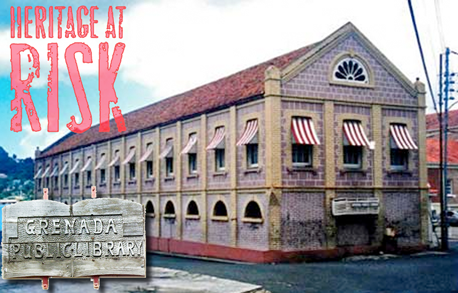
In Grenada the Library and Information Services began as early as 1846, with the passing of a bill by the Legislative Council, for the establishment of a library and museum. In 1853, a subscription library was thus declared open downstairs the Registry Offices, St. George’s.
In 1892, the library was moved to an old warehouse building located along the water font of the Carenage, St. George’s, a two storey nineteenth century brick and stone structure with red-tiled roof. By 1896 it was financed from the general revenue.
As early as 1906 it was noted by the then governor that considerable expenditure was required for their proper care of Grenada’s historical documents. This was followed in 1911 with N. Darnell Davis’ “Note on the West Indian Records” in which he said that the documents in the registrar’s office in St. George’s appeared to be carefully kept, but that in the secretary’s office insects were destroying some of the bound volumes, “notably in the case of Governor Melville’s papers, which had not long previously been recovered by purchase, from a London second-hand bookseller“. Note: N. Darnell Davis (1846-1915) was a colored Grenadian working in the civil service in British Guiana.
As a result of the Survey of Library Services in the Caribbean (commissioned by the Carnegie Corporation) and the recommendations by the English librarian, Ernest Savage, the library services changed in the 1940’s but still did not encompass an Archives.
The subsequently formed Eastern Caribbean Regional Library brought about new life to library services in the region, and in Grenada at that time large grants from government’s expenditure were made available to the library. In 1949, it therefore moved from a subscription library to a free public library.
In 1955 Sheila A. Buckmire was taken on as a member of the staff and she began slowly making efforts to add the Archival function to the library services. A Colonial development Fund of EC$10,624 for the purchase of books for a “bookmobile” was donated in 1961, allowing the introduction of twenty-three (23) service points across the island by May 1961.
1970 the Peace Corp assisted with training through librarians from their organization and one member of staff was subsequently awarded a UNESCO fellowship to pursue undergraduate studies at the University of the West Indies.
Then when 1980 was declared the “Year of Education and Production” by the short lived People’s Revolutionary Government (PRG) the library budget increased and copies of all government documents were deposited at the Public library and the National Archives then took on more substance. That same year a request was made of UNESCO to aid with a report on “Grenada Archival Development” by Clinton Vane de Brosse Black (Jamaican archivist) in co-ordination with consultant Mrs. Carol Collins (Librarian, University Guyana) to produce the 20 page outline of recommendations – despite being greatly hampered by the lack of time offered by then Government Officials.
With a grant from the European Economic Community in 1986 some renovations where undertaken at the Public Library/Archives increasing accommodation somewhat.
It was in 1992 that the building celebrated its 100 years of library services and its name was changed to the Sheila Buckmire Memorial Library in her honour – she had served for thirty-seven (37) years by the time she passed – and now functions as the National Library and Archives. The National Archives, housed in one room of the library, contained both archival material as well as material of potential archival value, but there is no archivist and rather primitive means of preservation and storage are employed.
MORE RECENT YEARS
 Grenada’s current head librarian and director of library services, Samaria Lillian Sylvester (gls@caribsurf.com), oversees the remaining eight (8) libraries in Grenada and two in Carriacou. However the Archives needs have been placed on the back burner and receive little help.
Grenada’s current head librarian and director of library services, Samaria Lillian Sylvester (gls@caribsurf.com), oversees the remaining eight (8) libraries in Grenada and two in Carriacou. However the Archives needs have been placed on the back burner and receive little help.
In 2001 Lillian found that Grenada’s school principals were struggling to encourage their young pupils to read and so encouraged the group “Boaters for Books, Inc” (Florida, USA) to hold a meeting at the Grenada Public Library with Kathy Oberle, Bobbie Nemerson, Dodie Helgerson resulting in the Boaters for Books contributing books to the island. This was at a time when Lillian also administered a mobile-book-library, which traveled the parishes of Grenada, dropping off books at schools re-circulating the books weekly.
This same year the Caribbean Regional Branch of the International Council on Archives (CARBICA) was formed they are part of the larger network the International Council on Archives (ICA) works closely with UNESCO and abides by the ICA’s Code of Ethics and has its own Constitution.
In partnership with the Department of Libraries of Grenada the CARBICA was invited in May 2003 to Grenada to hold a seminar on “Records Management –The key to Informed Decision Making. Can we afford not to have it?” setup for the senior civil servants from 26 ministries and departments of the Grenada Civil Service. Its focus was on the relationship between good governance and adequate record management, crucial to protect the rights of citizens and for democratic accountability.
For it Lillian wrote a Country Report in which she recommended an amendment to existing legislation/enactment for the initiation of new legislation which could establish support for the national library and archives:-
“…By the year 2010… one the goals would be to provide through a co-ordinated system of Public, School and Community Libraries; Archives and Documentation Services; the information required for recreational, educational, social, cultural and economical needs of the nation”.
In September 2004 Grenada had lost dozens of classrooms, and thousands of books, when Hurricane Ivan bore down on the island flooding the archives and filling the floor of the vault with 6 inches of water, though some small effort was made at the time to patch the roof no other efforts were made to restore the building or protect the valuable historical documents it held.
St. George’s University faculty librarian is T. Cheryl Sylvester (cheryl.sylvester…), who was educated at Mac Donald’s College in Sauteurs, St. Patrick’s, Grenada and spent two years (1997–1999) at the University of Toronto in Canada to gain a Master of Information Studies (M.ISt.) in Libraries and Archives, went on to get her Bachelor of Arts (B.A.) at University of the West Indies at Mona Campus in Jamaica. She later (November 2006) took on the post as Faculty Librarian at St. George’s University and for a time be elected Secretary at the CARBICA.
It was in October 2005, the Executive Board of CARBICA still very concerned about Grenada’s Archives, discussed a “rescue plan for the records”. They contacted Cheryl Sylvester and Lillian Sylvester to discuss how to assist in safeguarding the documentary heritage of this island after the disaster. The Society of American Archivists (SAA) through the Margaret Cross Norton Fund at the time provided some small financial assistance for CARBICA to make a report on the situation in Grenada.
Yet another time that funds were found to report on the situation of Grenada Archive’s – this too seemingly fell on deaf ears.
In November 2005 CARBICA sent Yulu Griffith Klein, archivist at the National Archives of St. Vincent and the Grenadines to Grenada to make an assessment of impact of hurricane Ivan on records and archives in Grenada by December. In her recommendations Klein accentuate the need to manage records properly taking into consideration their important role for the right as citizens, accountability and national memory. Furthermore she stresses the importance to dispose of a records disaster preparedness plan and the need for co-operation between sectors.
Klein recommended a consolidation of the various repositories under a new public agency, the National Archives of Grenada, for which the Government House in Grenada can form the core. Her report is being circulated in Grenada and to some other organizations e.g. the SAA (who donated US$1,000) and ICA, however no copy exists online.
Although the Carenage building was not officially abandoned it was closed and the archive continued to suffer.
Still, in March 2006 the Boaters for Books once again presented 200 books for Grenada for distribution to needy schools, libraries and community centers by Lillian and newly appointed Emmalin Pierre (daughter of the taxi and tour driver Darius).
In the September 2010 Budget the then Government continued to ignore the National Archives problem and merely suggested they would house only the Government Archives in a new four story Office Complex to be sited on the old Cardats building on Lowthers Lane.
At the 38th Caribbean Studies Association Annual Conference in June 2013:-
Lillian Sylvester offered a report on “Libraries in Grenada in the twenty-first century” which discussed the survival of the islands libraries given Information and Communication Technologies (ICT) realities, and outlined a little about the Grenada situation given present realities.
Cheryl Sylvester outlined a project, in conjunction with Institute of Caribbean and International Studies (ICIS), which aimed to rescue documents in crisis in Eastern the Caribbean. Entitled “Eastern Caribbean Documentation & Archival Imaging Centre: A proposal too late or too early?” the plan had four phases and started with four Grenadian collections: the Lord Pitt of Hampstead collection, the collection of Alister Hughes, the Governor General‘s collection and the Dougaldston Estate records. However, it was revealed that just a few months into its conception, the project faced a number of problems – lack of funding, the absence of a National Archives premises, the occurrence of Hurricane Ivan, the death of Mr. Alister Hughes and subsequently, the effective collapse of ICIS. As a consequence, the project proposal remained in state of suspension. Given these challenges including the closure of the Grenada Public Library and Archives, the endowment of Mr. Hughes‘ collection to University of the West Indies and the worsening economics, is was argued “what options remained in light of the challenges faced?”.
Finally Merle Collins (collinsm@umd.edu) covered “Grenada Library and Archives – Some triumphs, Challenges, Needs” which talked about challenges for the department from her perspective as a regular, long-term user and ‘Grenadian’ poet.
A DECADE SINCE CLOSURE
Little or nothing has been achieved to build a new more appropriate Archive premises and even under its hat as simply a National Library hasn’t motivated the building’s repair or replacement.
Eighty-eight acres Land at Hope in Saint Andrew’s on the east-coast was gifted in 2012 by the Congress Government for the construction of a Grenada UWI campus. Although this is away from the main city and will house its own library, no plans are in place to add a purpose built Archival Department building which could be used for in the Caribbean for the training of future Archivists and Document Preservation, Restoration and Digitization techniques.
In 2013 budget speech Keith C. Mitchell, overlooking the Archives issue, merely stated:-
“Attention will be given to developing a policy on libraries for Grenada. In the meantime, provisions have been made to relocate the Public Library and the St. Patrick’s Library and to strengthen several Community Libraries“.
By the 2014 budget report even this had been dropped.
Then in 2014 Lillian was presented with thousands of dollars worth of reading and educational books for dissemination to school libraries around the island, purchased with funds collected from the UNESCO International Jazz Day Educational Programme event, sponsored by the Organization of American States (OAS) entitled “Jazz It Grenada” which was hosted by the Cruisers based at the Prickly Bay Marina on Thursday 3 April 2014.

During the March 2014 Diasporic Literary Archives Network fourth workshop in Trinidad in Cheryl Sylvester, speaking about the situation in Grenada, said:-
“It is not just a shortage of professional expertise that prevents full exploitation of archival material, but the fundamental absence of a building suitable for housing a national library and archives since the damage caused by the hurricane of 2004. A transnational campaign to replace the former Public Library, supported by the tiny group Friends of Grenada Library, Archives and other Heritage Committee (GRENLIB), is attempting to fundraise for a new building, but clearly a higher level of government commitment is required if the building is ever to become a reality.
While there is now no national archive in Grenada important holdings are still at risk of being lost, stored in inadequate conditions and liable to environmental degradation.”



For the current status check-out our page at Grenada’s Endangered Archives.






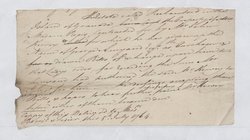
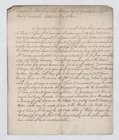




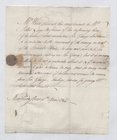















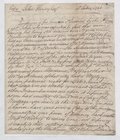




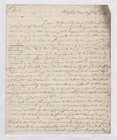





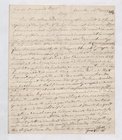

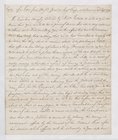
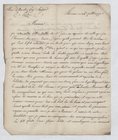


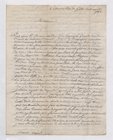

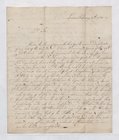

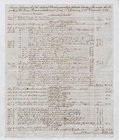


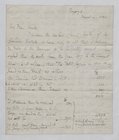
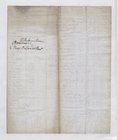
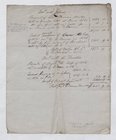
















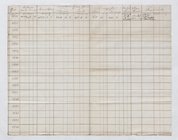


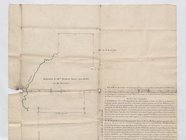








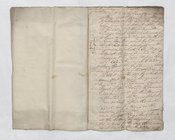







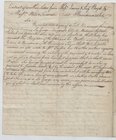









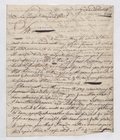
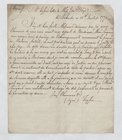


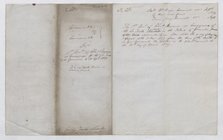


 517 Images
517 Images

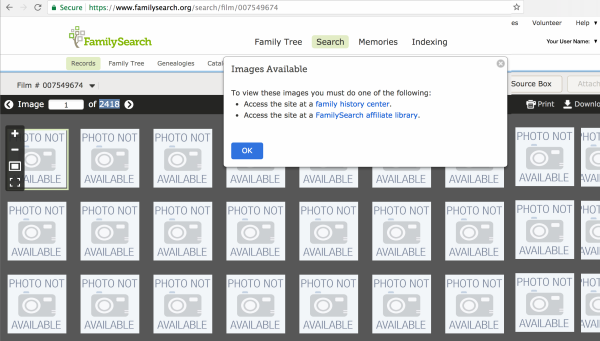



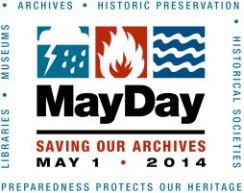

 Grenada’s current head librarian and director of library services, Samaria Lillian Sylvester (
Grenada’s current head librarian and director of library services, Samaria Lillian Sylvester (



